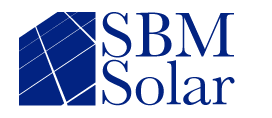What do you think of when you hear the term solar power? Perhaps you think of the solar farms that are popping up everywhere or the big panels on roofs or behind houses? Maybe you think of those who want to live off the grid and need to generate their own power or maybe you think of solar power as an add-on to electricity, to lessen your dependence on and the cost of traditional power. All of those are correct, but if we stop there, we are shortchanging the capability of solar power. Did you know that solar panels are being used to power balloons launched into the atmosphere to grab atmospheric data?
Did you know that solar panels are being used on unmanned marine vessels that gather oceanic data? Did you know that some solar panels are able to be folded up and carried in a backpack, so you have a power source where you need it?
The idea of turning the sun’s energy into something we could use has been around for over a hundred years, but it has taken decades to fine-tune the technology capable of capturing the suns rays and converting it into usable electricity or storing it for use when needed - the technology is still evolving.
Solar panels have long been constructed using a glass backsheet. The reason for this is that glass is a thermostable material that also provides stability and protection for the inner layers of the solar panel. However, glass solar panels are heavy, more easily broken, and do not hold up well in harsh weather conditions and under rugged usage conditions, so something different had to be done.
SBM has developed a non-glass PV module that has been utilized in military applications since 2011. Unlike the glass panels, the non-glass panels are lightweight, so they don’t pose a problem being mounted on a roof of a house, the outside of a tent, or even being attached to a balloon to be launched into space. The non-glass panels stand up to harsh atmospheric conditions, so they can be used on marine vessels: manned and unmanned and because they aren’t easily broken, they can be used on the roof of a semi or attached to a camper as another source of power. Because they are flexible, they can be folded and placed in a backpack, so they are easily transportable.
While it is likely that glass solar panels will always be around, according to an article in PV magazine, there is a new generation of lightweight, flexible PV modules entering the market, so it looks like the non-glass PV panels are here to stay. We at SBM Solar are glad to be part of that market.
Weekend Read: Flex generation – pv magazine International (pv-magazine.com)
